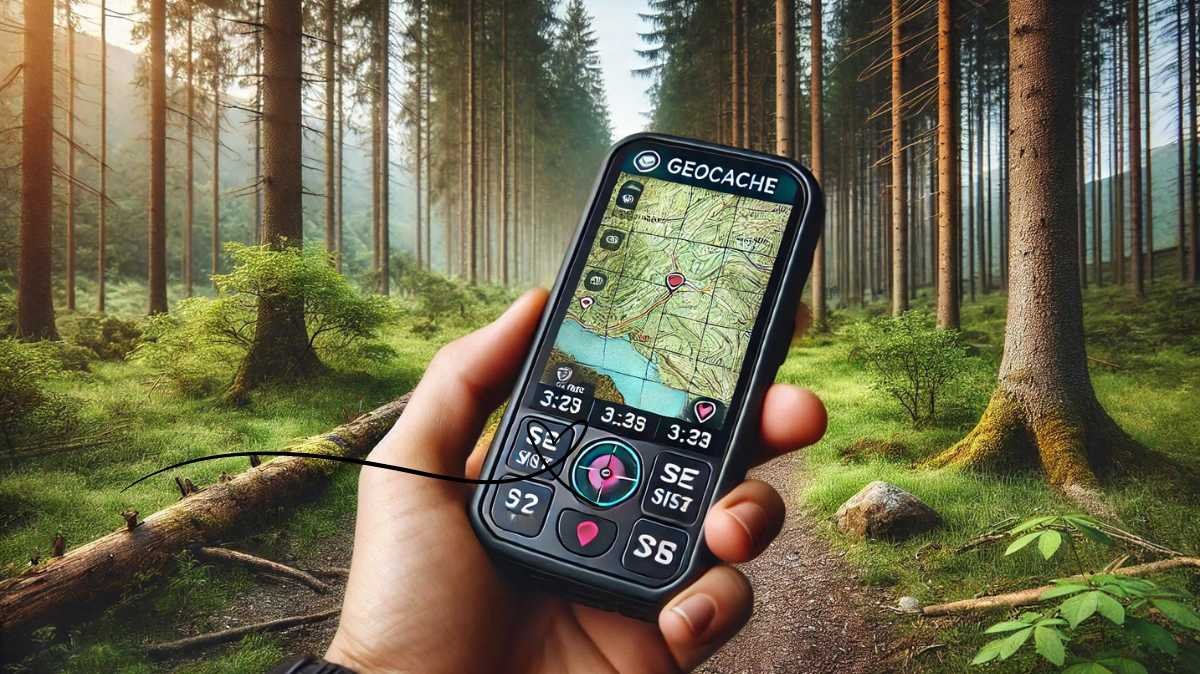Geocaching is an adventurous, outdoor activity that has gained immense popularity worldwide. This modern-day treasure hunt involves finding hidden containers, called “geocaches,” using specific coordinates. If you’re new to this exciting hobby, you may wonder, what is the main tool used in geocaching? The simple answer is a GPS device or smartphone with GPS capabilities. However, there’s more to the story. In this article, we will dive deep into the tools, techniques, and nuances of geocaching, giving you a full understanding of what’s required to excel in this game of hide and seek.
Table of Contents
What is Geocaching?
Geocaching is a real-world, outdoor treasure-hunting game where participants use GPS devices or smartphones to hide and seek containers, known as “geocaches” or simply “caches.” These caches are hidden in various locations worldwide and often contain trinkets or logs for the finders to sign. Geocaching combines exploration, technology, and adventure, making it an engaging hobby for people of all ages.
The Main Tool for Geocaching: GPS Device
Why GPS is Essential
When it comes to geocaching, the most crucial tool you’ll need is a GPS device. GPS (Global Positioning System) technology allows you to pinpoint your location anywhere on Earth, enabling you to navigate to the exact coordinates of a hidden geocache.
A GPS device is used in geocaching because it provides real-time satellite data that helps users find specific geolocations with high accuracy. This technology has revolutionized geocaching, making it more accessible and efficient than using traditional paper maps and compasses.
How GPS Works in Geocaching
The primary function of a GPS in geocaching is to help locate caches by providing coordinates. When a geocacher hides a cache, they record its latitude and longitude using a GPS device. Other geocachers can then use their devices to input these coordinates and search for the cache. A good GPS unit ensures you’re directed to the cache location within a few meters of accuracy, crucial for finding well-hidden treasures.
GPS devices have several features specifically useful for geocaching, including waypoint marking, route plotting, and geocaching mode, which shows you a list of nearby caches.
Geocaching with Smartphones: A Modern Twist
Though traditional GPS devices remain the gold standard, smartphones with built-in GPS have made geocaching even more accessible. Smartphones are now equipped with powerful GPS capabilities, and apps dedicated to geocaching have made the experience seamless.
Top Geocaching Apps
- Geocaching® by Groundspeak: The official app from Geocaching.com, which allows users to access millions of caches worldwide, log finds, and navigate to caches.
- Cachly: A highly-rated iOS app that offers offline maps, cache filters, and advanced navigation features.
- Locus Map: Ideal for Android users who want detailed maps and route planning tools.
Advantages of Using Smartphones
- Convenience: Most people carry their smartphones everywhere, which makes it easy to start a spontaneous geocaching adventure.
- Multi-functionality: Besides GPS navigation, smartphones allow you to take photos, make notes, and log your geocaching finds directly into the app.
- Regular Updates: With app updates and access to online databases, you always have up-to-date information about caches.
Other Essential Geocaching Tools
While the GPS is the main tool, successful geocachers often bring along a few other helpful items:
Compass
A traditional compass can be a valuable backup in case of GPS failure or low battery. Some GPS devices even come with a built-in compass to enhance accuracy.
Maps
Though GPS technology is extremely reliable, carrying a physical map of the area is a smart safety precaution. Paper maps don’t rely on batteries and can be useful in remote areas where satellite reception is poor.
Pen and Paper
When you find a cache, most will have a logbook where you can jot down your name and the date of your find. Bringing a pen is essential, as many geocaches do not provide writing tools. Additionally, keeping a small notebook for personal notes or clues can be helpful.
What to Look for in a GPS Device for Geocaching
When choosing a GPS device, there are a few critical factors to consider:
Accuracy and Durability
GPS accuracy is vital for geocaching, especially when caches are hidden in tricky spots. Look for devices with WAAS (Wide Area Augmentation System) capability, as these provide enhanced accuracy. Durability is equally important because geocaching often takes you through rugged terrain, so choose a GPS with water resistance and a sturdy build.
Battery Life
Extended battery life is a must for long geocaching trips. Devices that support both rechargeable batteries and disposable ones offer flexibility.
Screen Readability
A bright, easy-to-read screen is crucial for navigating in different lighting conditions, whether in bright sunlight or deep forest shade.
Understanding GPS Coordinates in Geocaching
Geocaching relies on specific latitude and longitude coordinates. These coordinates direct geocachers to the exact location of the hidden cache. Understanding how to input and read GPS coordinates is essential for geocaching success. Most GPS devices and apps make this easy by allowing users to copy and paste coordinates or input them manually.
To further enhance your geocaching experience, the official Geocaching.com website is an invaluable resource for finding caches, learning about the community, and staying updated on geocaching events.
The Role of Geocaching Apps
While a traditional GPS device is reliable, geocaching apps add a new level of convenience and interactivity. These apps offer real-time updates, geocache logging, and even hints to help you find trickier caches. They integrate social features, allowing users to share their experiences and communicate with other geocachers.
Additional Resource: To enhance your geocaching experience, you might explore GPS tools on Garmin’s website, where you can find a variety of GPS devices suited for outdoor activities like geocaching.
How to Find a Geocache Using GPS
Finding a geocache with a GPS device is simple once you get the hang of it. Here’s a step-by-step guide:
- Input the Coordinates: Start by inputting the cache’s coordinates into your GPS device.
- Follow the Compass: Most GPS devices have a compass mode that will guide you directly to the cache.
- Check Your Distance: As you near the location, monitor the distance-to-cache reading.
- Look Around: Once you’re within a few meters, the real challenge begins—finding the hidden cache.
Offline Geocaching: Navigating Without Internet
One of the benefits of a GPS device over smartphones is the ability to geocache offline. With most GPS units, you can preload maps and cache locations before heading into areas with no cellular coverage.
Geocaching Etiquette and Safety Tips
It’s important to follow the geocaching community’s code of conduct, including:
- Leave No Trace: Don’t disturb nature while searching for or hiding caches.
- Respect Property: Some geocaches are hidden on private land with permission; always respect boundaries.
- Be Prepared: Pack essentials like water, snacks, and a first-aid kit, especially if geocaching in remote areas.
Geocaching for Beginners: Must-Know Tips
Starting out can be overwhelming, but with a few tips, you’ll be geocaching like a pro in no time.
- Start with Easy Caches: Look for beginner-friendly caches with low difficulty ratings.
- Read Cache Descriptions: Often, the description contains vital hints or interesting facts.
- Be Patient: Some caches are tricky to find, so take your time and enjoy the search.
Advanced Geocaching Techniques
Once you’ve mastered traditional geocaching, you can explore more complex options like multi-caches, which require you to find multiple stages, or puzzle caches, which involve solving riddles to determine the final coordinates.
Frequently Asked Questions (FAQs)
What is the most important tool in geocaching?
The most important tool in geocaching is a GPS device or a smartphone with GPS capabilities. These tools allow you to navigate accurately to the geocache coordinates.
Can you geocache without a GPS?
While possible to geocache using maps and a compass, a GPS device is far more accurate and efficient.
Is geocaching safe?
Geocaching is generally safe, but always follow basic outdoor safety guidelines, such as telling someone your location and carrying supplies.
What’s the difference between a GPS device and a smartphone for geocaching?
A dedicated GPS device often provides better battery life and works offline, while a smartphone offers convenience and real-time updates.
Do I need an internet connection to geocache?
You don’t need an internet connection if you’re using a dedicated GPS device or if you’ve downloaded the necessary maps on your smartphone beforehand.
What’s the best GPS device for geocaching?
Top models like the Garmin eTrex 32x and Garmin GPSMAP 66s are excellent choices for geocaching due to their durability, accuracy, and geocaching features.
Author

An aspiring business leader, I am working towards my dream of graduating from Stanford University with a degree in Business Management. Passionate about sharing knowledge, I strive to empower others through education and collaborative learning.
View all posts


